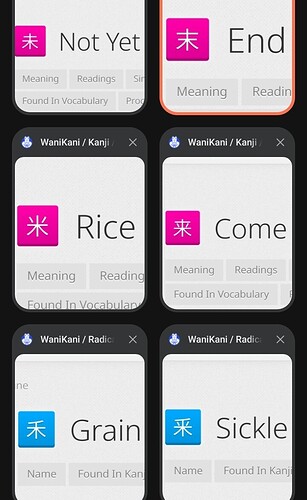Very nice research there, but to be entirely precise, the green “horizontal stroke” in 禾 and 釆 is actually a ノ radical rather than a horizontal stroke - it’s drawn right-to-left, with a slight curve, rather than left-to-right.
9 Likes
In the beginning I tried doing something similar like this where I would try to remember that this kanji had this extra stroke or this other one had this missing stroke and -for me- it ended up not scaling well. There’s a point where the similarities between some kanji are almost imperceptible and if I don’t provide my brain a way stronger bond between the kanji and the meaning, I’m done. The “extra line” here or there has a tendency in my brain to cross the boundary between kanji and I found myself trying to remember this in the wrong kanji.
So for me, the extra line on top of 良 (good) is the drop of water that helps the root radical grow, and that’s a “good” thing. If I try to remember that 良 is like 長 (long) but with the two extra lines then my brain will try it’s best to ignore this as fast as it can.
That’s just how my brain is wired and also why the Wanikani system works very well for me. I’m team mnemonics all the way! And yes, I’ve found myself uttering “wtf!” after reading some mnemonics which obviously didn’t work for me!
1 Like
The mnemonics are really helpful, but personally if I keep confusing the same two kanji, it definitely helps to take a closer.
I know it wasn’t your point, but it’s not just the two extra lines with 長. 長 has an extra horizontal line that 良 doesn’t and the line between the top and bottom parts is longer. It’s sort of interesting because when you point it out, they do look similar, but because I had to learn to write them for school and the stroke order is very different, they had a totally different construction in my mind. I wonder if it could help people stuck confusing two kanjis to try writing them out, even just once?
Hahaha I know what you mean about some of he mnemonics being confusing, though. They have to make a lot of them and sometimes… Sometimes.
2 Likes
Absolutely! I’ve started writing the tough kanji not long ago and it has helped immensely!
2 Likes
![]()
![]()
![]()
![]()
![]()
![]()
![]()
![]()
![]()
![]()
![]()
![]()
![]()
![]()
![]()

